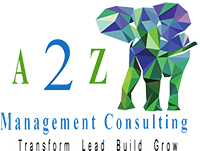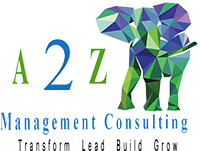Google has a very large team of search quality raters that evaluate the quality of search results, that gets fed into a machine learning algorithm. Search Engine Optimisation (SEO) is the practice of increasing the number and quality of visitors to a website by improving rankings in the algorithmic search engine results. SEO and SEM strategies help marketers put digital content in front of the right audience. However, SEO strategies focus on organic search, whereas SEM generates paid traffic. SEO doesn’t cost money in the way that SEM ads cost per engagement, but organic visibility requires investing time and effort into SEO.
Technical SEO
- If you don’t have the Google Search Console setup, you’re flying blind with your SEO.
- Before we dive into some of the factors of on and off-page SEO, let’s talk about content.
- Search engines prioritize websites that offer high-quality, informative, and relevant content that satisfies users’ search intent.
- Agencies offer a team of experts who manage all aspects of your SEO, from strategy and content creation to technical SEO and analytics.
- So if you want to learn more about those, check out our article on video SEO and our podcasting guide.
On the other hand, a website with high-quality, authoritative copy and regular updates will rank much higher. When someone searches for a website, Google will display sites that offer the best value to its users, according to their standards. Websites are ranked primarily based upon the competition between your web pages and other web pages for a particular keyword. The web pages which follow the best practices outrank every other web page in the competition and rank on top for those keywords.
But sometimes you’re better off with content that’s completely different. If you see sites with a high number of common keywords, then you can consider them your competitors. I recommend typing a few different keywords into Google until you have a list of about 10 keywords. Do everything you can to build strong relationships with other bloggers (including linking to their blog posts).
Fundamental Steps to Learn SEO
For example if you’re writing a page that will appear on a blog internal to your website, you could use a URL slug that reflects your site hierarchy. On this page, squarespace.com/blog/on-page-seo indicates that this page lives on the website’s blog and is focused on on-page SEO as a topic. Add your relevant H2s, H3s, and further headings using both primary and secondary keywords where applicable.
Organizations can bid on a keyword or phrase so a link to their page automatically appears on SERPs for that term. These ads follow a pay-per-click (PPC) model in which users pay a fee every time someone clicks on the ad. The title tag and meta description are two of the most important on-page SEO elements. The title tag is the text that appears at the top of the browser tab, and the meta description is the text that appears in the search engine results pages (SERPs). There are different ways to find the right keywords for your SEO strategy. One is to create buyer personas, which are semi-fictitious representations of your ideal customers.
Learn SEO fundamentals.
Having a web app version of their website allows them to leverage SEO as a channel to bring in organic growth. This is something I recommend many mobile apps try to do as well. Looking for the best SEO examples to gain inspiration for your own strategy?
Now is the best time to build an SEO-first media company because most don’t think it’s possible, so they’re not even trying. While their domain rating is quite high, 88, it’s still a good sign that topics like this are still here to stay. While the rise of ChatGPT has taken a lot of informational queries, Google is still king when it comes to most searches on the web.
Your website can succeed in 2025’s competitive digital world by following these proven best practices. You need to understand three main types of SEO to make your optimization strategy work. Each type has a unique role in making your website more visible and improving its ranking in search results. Although there are a ton of other aspects that you can track but the above things are essential. By keeping an eye on the above things, you’ll understand your audience behaviour, what type of content to create, how to build backlinks etc.
In simple terms, search marketing is about getting visibility and traffic from search engines using both paid and unpaid strategies. So the only way to get rewarding results from search engines like Google is to focus on creating quality content over quantity and give top priority to your users. That being said, keyword research is extremely important before creating any blog post. Keyword research is the process of finding words and phrases that people use in search engines like Google. Now that we’ve covered what influences your search ranking, it’s time for some actionable advice. BHS Links Drawing from our experience with LinkedIn search engine optimization, we’ve compiled a list of hacks that will help you rank higher.
Search engine optimization has evolved since the days of Jefferson Starship, with Google becoming the leader in the industry. That’s why, when talking about SEO, most people are talking about Google SEO. EEAT stands for Expertise, Experience, Authority, and Trustworthiness. Google wants to show in the results websites that exhibit high levels of E-E-A-T. For example, someone searching for “best laser printers” is looking for a list of the best printers to buy. Besides the main SEO types, there are also subsets of SEO for specific website types.

